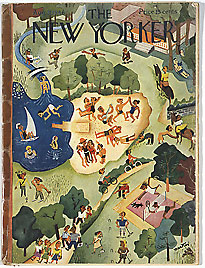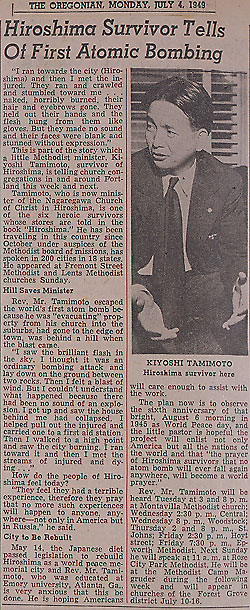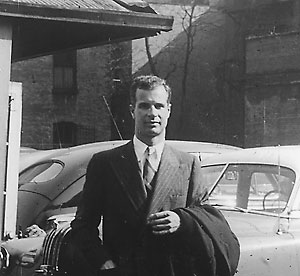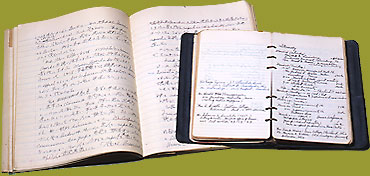Helping Hiroshima
Helping Hiroshima Given the lack of assistance from domestic sources, the hibakusha perceived assistance from outside Japan to be a wonderful and unexpected gift. Until about 1952, relief from overseas involved primarily donations of money, food, clothing and other daily necessities. Assistance programs were developed throughout the country, but Hiroshima received special aid not given to other areas, including assistance to A-bomb orphans and the actual building of houses. Under the occupation, A-bomb reporting was severely restricted domestically, but overseas, a number of publications and lectures by hibakusha communicated the situation to the public. This communication inspired great interest in Hiroshima, leading to considerable assistance.
The A-bomb Experience Conveyed Overseas
At a time when the situation of the hibakusha was barely known in Japan the American journalist John Hersey interviewed six Hiroshima survivors. These interviews became a long article that filled The New Yorker magazine on August 31, 1946. The plights of the six survivors were described in detail, and this description struck a nerve in the US.
One of the survivors featured in the article, Pastor Kiyoshi Tanimoto of Hiroshima Nagarekawa Church, accepted an invitation from an American church and visited the US in 1948. He traveled through the country telling his A-bomb story and highlighting the importance of peace.
Reports of the atomic bombing and Pastor Tanimoto's activities were directly linked to assistance that subsequently came in from overseas.
 |
18 The New Yorker magazine August 31, 1946 Courtesy of Chisa Tanimoto John Hersey's reportage "Hiroshima" was first published in The New Yorker magazine where all the pages of the magazine were dedicated to this article. Hersey was sent to Hiroshima as a correspondent in May 1946, where he covered the story from the different standpoints of six persons including clergy, doctors and a clerk. His detailed description of what people experienced during the dropping of the A-bomb and during the first aid activities aptly communicated the horror of the A-bomb and the indiscriminate sacrifice of normal people. |
 19 Article about speeches given by an A-bomb survivor July 4, 1949 Oregonian Courtesy of Chisa Tanimoto Many Americans were stunned to hear for the first time an eyewitness description of the A-bomb and his thoughts regarding peace. His speech at Emory University, Tanimoto's alma mater, was especially moving, inspiring the founding of a program to provide support for Hiroshima. Tanimoto returned to the United States many times afterwards in his lifelong efforts in appealing for support for Hiroshima and the importance of peace. ©1949 The Oregonian. All rights Reserved. Reprinted with permission |
 20 Mr.John Hersey |
||
| 21 Lecture trip notebooks Courtesy of Chisa Tanimoto In these notebooks Pastor Kiyoshi Tanimoto of Hiroshima Nagarekawa Church kept a journal of his lectures and other experiences traveling in the United States. During his first trip, from October 1948 to December 1949, he visited 256 cities in 31 states and gave more than 500 lectures in churches, schools, and other venues. |
 |
